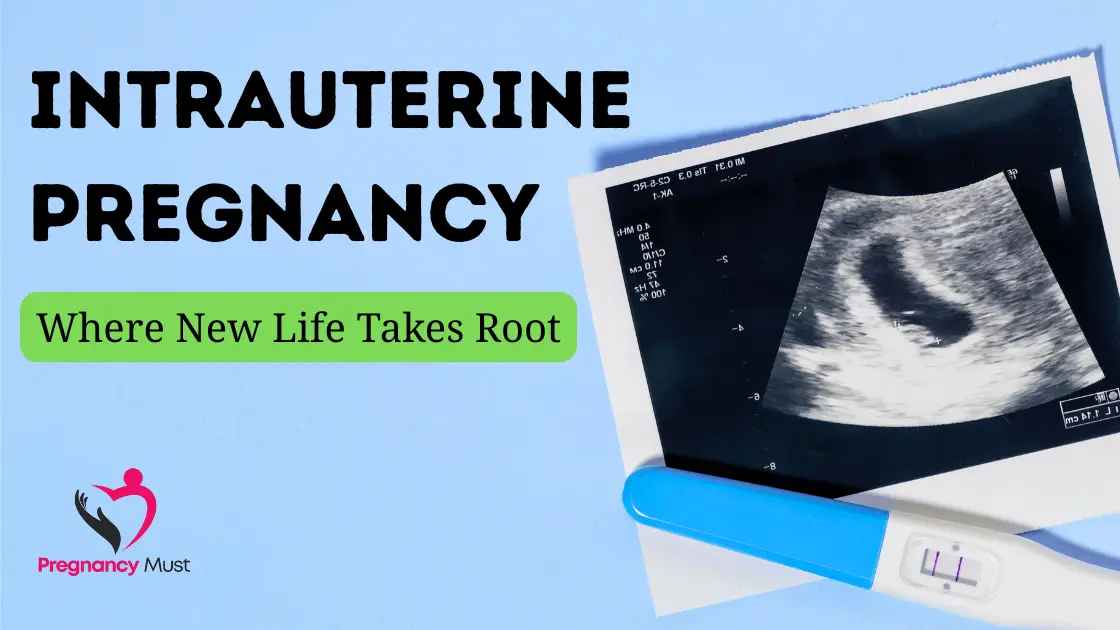Intrauterine pregnancy is one of the most important terms you’ll come across when learning about reproductive health and early pregnancy stages, especially during ultrasound evaluations and prenatal care.
Table of Contents
- What is Intrauterine Pregnancy?
- Signs of a Healthy Intrauterine Pregnancy
- What Does Intrauterine Pregnancy Mean for You?
- Intrauterine Pregnancy vs. Ectopic Pregnancy
- Symptoms Comparison
- Stages of Intrauterine Pregnancy
- Common Concerns During Early Intrauterine Pregnancies
- What Causes Intrauterine Pregnancy Loss?
- How Is Intrauterine Pregnancy Diagnosed?
- Is Intrauterine Pregnancy Always Viable?
- Treatment Options and Care Plans
- Intrauterine Pregnancies and Fertility Outlook
- How to Support a Healthy Intrauterine Pregnancy
- When to Seek Medical Help Immediately
- Emotional Aspects of Intrauterine Pregnancy
- FAQ About Intrauterine Pregnancy
What is Intrauterine Pregnancy?
Understanding the Basics
The intrauterine pregnancy refers to a pregnancy where the embryo implants and grows within the uterus—where it’s supposed to. This is the most common and healthy type of pregnancy.
This condition is the opposite of an ectopic pregnancy in which the embryo implants outside the uterus, usually in a fallopian tube. A confirmed intrauterine pregnancy is a positive sign during early prenatal scans.
Intrauterine Pregnancy Definition
Medical term of the definition of intrauterine pregnancy, according to the definition of gestational sac or embryo in the uterus that was confirmed by ultrasound. It is usually a confirmation of a viable, normal pregnancy when accompanied by a yolk sac, fetal pole or heartbeats
Signs of a Healthy Intrauterine Pregnancy
1. Missed Period and Positive Pregnancy Test
A missed period is usually the very first sign that prompts someone to consider pregnancy. When your body starts producing the pregnancy hormone hCG (Human Chorionic Gonadotropin) after implantation, it stops your menstrual cycle. Taking a home pregnancy test after a missed period often shows a positive result because it detects this hormone in your urine. While not a confirmation of intrauterine pregnancy, it’s the first strong indication that fertilization and implantation likely occurred.
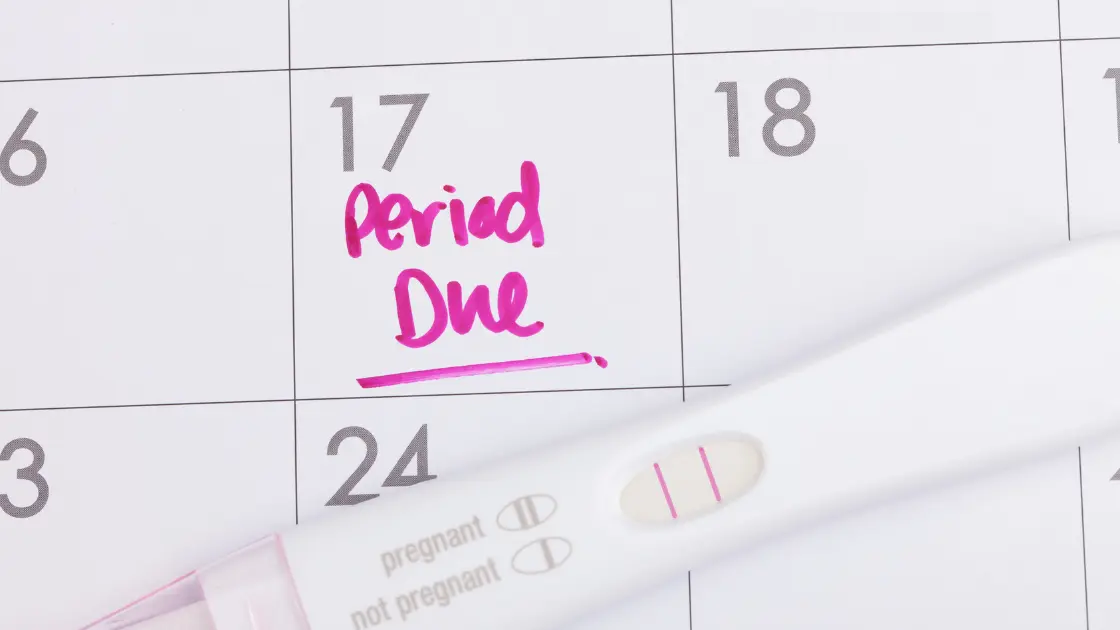
2. Ultrasound Confirmation
The most reliable way to confirm an intrauterine pregnancy is through an ultrasound. A gestational sac is normally expected to appear in weeks 5-6 of gestation and be seen in the uterus through the use of transvaginal ultrasound. It is a structure which is fluid-filled inside of which the embryo develops. Further on in the pregnancy other structures such as the yolk sac, the pole and later the beating heart can be observed. Seeing the gestational sac in the uterus helps doctors rule out ectopic pregnancy and confirm that the pregnancy is located where it should be.
3. Normal hCG Levels
The level of hCG should steadily increase during early pregnancy, as the result, the hormone doubles every 48-72 hours. The doctors can request to check these levels by ordering blood tests, should you experience any symptoms such as cramping or spotting. A consistent and regular increment in hCG implies that the pregnancy is progressing in line. If the levels are too low, slow to rise, or suddenly drop, it may indicate a non-viable pregnancy (e.g., a miscarriage or an ectopic pregnancy). Tracking hCG helps in closely monitoring the health of your intrauterine pregnancy.
What Does Intrauterine Pregnancy Mean for You?
Hearing the words “intrauterine pregnancy” from your doctor is usually a very positive sign. It means the embryo has implanted in the right place—inside the uterus, where it can grow safely. This rules out dangerous conditions like ectopic pregnancy, where the embryo grows outside the uterus and can’t survive.
If you’re asking what is intrauterine pregnancy, think of it as your body’s way of saying, “Everything is starting off well.” It is regarded as the green light of medicine that nothing is wrong with the pregnancy being that much advanced, location-wise at least. At this point, your medical team will be able to pay attention to a healthy and successful pregnancy process.
Intrauterine Pregnancy vs. Ectopic Pregnancy
Location Matters Most
The biggest difference between these two types of pregnancy is where the embryo implants and begins to grow:
- Intrauterine Pregnancy: This means the embryo has implanted inside the uterus, which is the natural and safe location for a pregnancy to develop. It allows the baby to receive proper nourishment and space to grow. This type of pregnancy is usually healthy and viable.
- Ectopic Pregnancy: In this type of case, the embryo implants outside the uterus, most commonly in a fallopian tube. This is dangerous and nonviable because the embryo cannot grow properly in such a location and could rupture the tube, causing serious internal bleeding. Ectopic pregnancies require immediate medical attention.
Symptoms Comparison
| Symptom | Intrauterine | Ectopic |
| Normal hCG rise | ✅ | ❌ |
| Cramping | Mild | Severe |
| Vaginal bleeding | Minimal | Often heavy |
| Fetal heartbeat detected | ✅ (7 weeks) | ❌ |
Stages of Intrauterine Pregnancy
Week 4–5: Gestational Sac Appears
Around the 4th to 5th week of pregnancy, the gestational sac is usually the first structure that can be seen during an ultrasound. It appears as a small, dark, fluid-filled area inside the uterus. While it’s still too early to see the baby or even the yolk sac, the presence of this gestational sac confirms that the pregnancy is intrauterine—meaning it’s developing in the right place. This is a crucial first step in early pregnancy assessment.
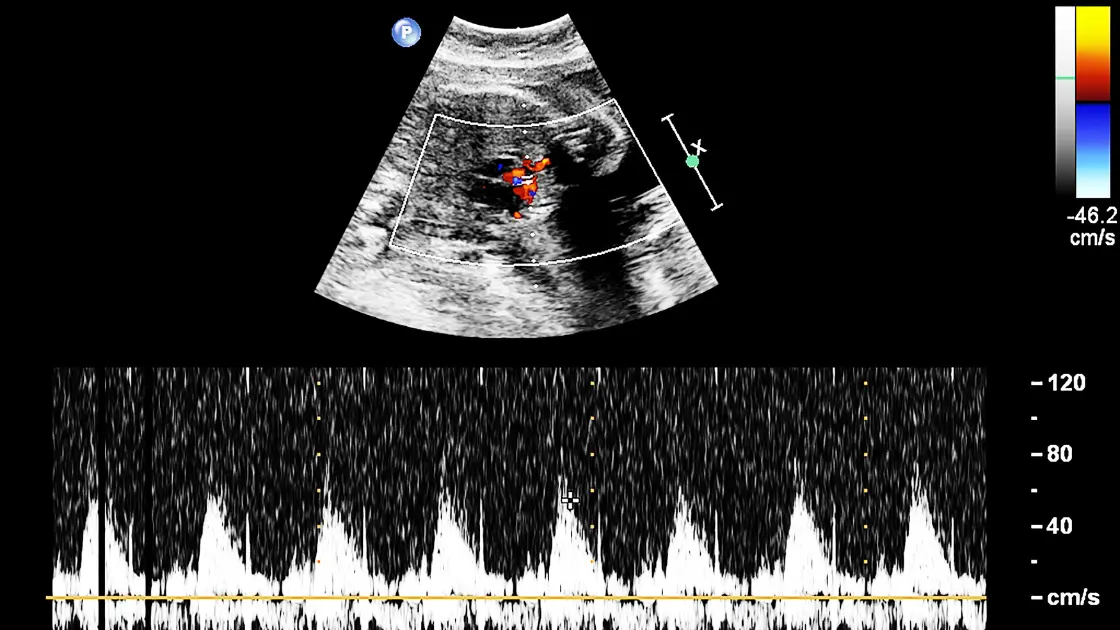
Week 5–6: Yolk Sac and Fetal Pole
As the pregnancy progresses into the 5th and 6th week, the yolk sac becomes visible inside the gestational sac. Yolk sac is crucial to feeding of the embryo until when the placenta has fully developed. Together with it, you can see the so-called fetal pole the thickening on the margin of the yolk sac which, later, will turn into the spine of the baby. The emergence of the structures is the big milestone that indicates the healthy early development of being in an intrauterine pregnancy.
Week 6–7: Heartbeat Detectable
Experience demonstrates that evidence of a viable intrauterine pregnancy can be confirmed by week 6 or 7 by detecting a fetal heartbeat. Using transvaginal ultrasound, there can usually be found to flicker a heartbeat in the spot where the fetal pole is. It is one of the best comforting signs that the pregnancy is on course. With heartbeat, chances of miscarriage are very reduced, and the chances of the pregnancy to proceed safely are also increased.
Common Concerns During Early Intrauterine Pregnancies
Mild Cramping or Spotting
In early intrauterine pregnancy, many women experience mild cramping or light spotting. This can be completely normal as the uterus begins to stretch and adjust to support the growing embryo. It often feels similar to period cramps and may occur around the time when implantation happens. However, it’s important to note the intensity and duration of symptoms. If cramping becomes severe or if there is heavy, bright red bleeding, it could signal a problem such as a miscarriage or ectopic pregnancy—and immediate medical evaluation is necessary.
Slow-Rising hCG Levels
Generally the period of hCG (human chorionic onadotropin) levels rising in normal intrauterine pregnancy is almost 48 to 72 hours where the levels are doubled. Nevertheless, there are slower elevation processes of hCG in other cases. It may be caused by personal hormonal changes but may be also an indication of a possible problem with the course of the pregnancy. To assess this, your doctor may recommend repeat blood tests and follow-up ultrasounds to check whether the embryo is developing properly and whether a heartbeat is detected. A slow rise doesn’t always mean bad news, but it does require close monitoring.
Gestational Sac But No Fetal Pole
By the 6th to 6.5th week of gestation, doctors expect to see a fetal pole (a thickened area that becomes the baby’s spine) inside the gestational sac. If the sac is visible on ultrasound but there’s no fetal pole, it could mean one of two things: the pregnancy is not as far along as originally thought, or there may be a complication such as a blighted ovum (a type of early pregnancy loss). In such cases, doctors usually wait and repeat the ultrasound in a week to track any further development before making a diagnosis.
What Causes Intrauterine Pregnancy Loss?
Even when implantation occurs correctly, certain conditions can disrupt the pregnancy:
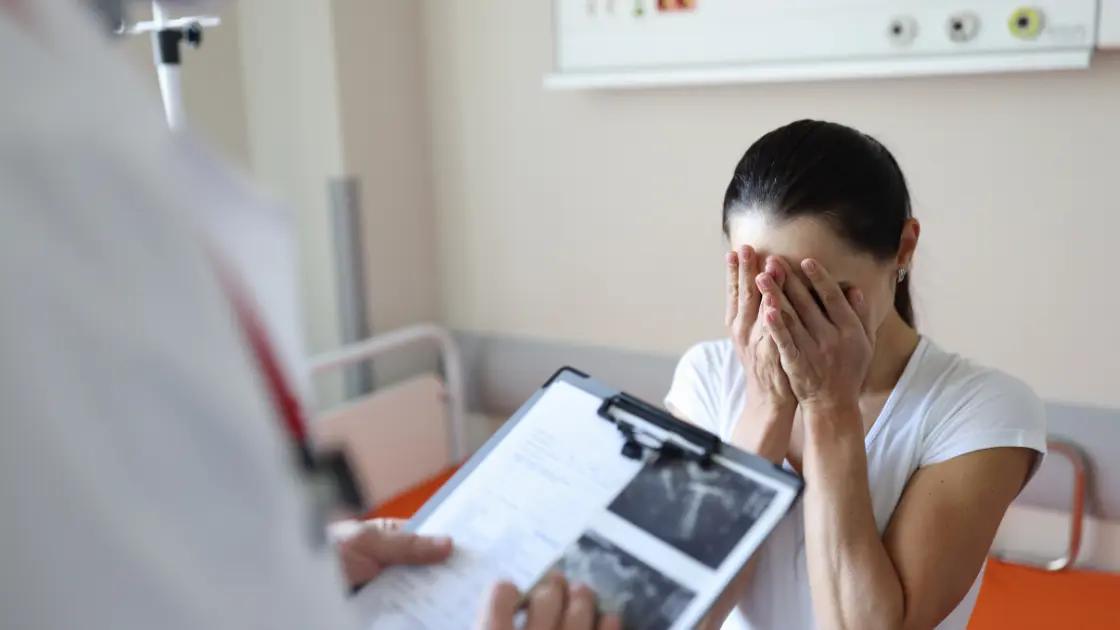
Chromosomal Abnormalities
Chromosomes carry the genetic blueprint for a baby’s development. If an embryo has too many or too few chromosomes, or if the DNA is damaged, it can prevent normal development. These abnormalities often happen by chance during fertilization and are the most common cause of early pregnancy loss. In such cases, the body may naturally stop the pregnancy because the embryo can’t grow properly.
Hormonal Imbalances
Pregnancy requires well-balanced hormones and progesterone is a major hormone (as the hormonal balancer) that makes uterine lining viable and supports the pregnancy. In case the body fails to manufacture sufficient progesterone, uterus is unable to hold the growing embryo which causes an early miscarriage. Other hormonal issues, like high prolactin levels or thyroid hormone imbalances, can also interfere with normal pregnancy development.
Infections
Certain infections—such as toxoplasmosis, listeria, rubella, cytomegalovirus, or STIs—can cross into the uterus and harm the embryo or fetus. These infections have the capacity to lead to inflammation of the uterus, destruction of the placenta or such infections may harm development of the child. The infection can increase the chances of miscarriage even in the first trimester even when the pregnancy is present in the right place in the uterus.
Poor Uterine Lining
The endometrium (inner lining of the uterus) needs to be thick and healthy for an embryo to implant and grow. If the uterine lining is too thin, scarred (from surgeries or infections), or otherwise unhealthy, the embryo may fail to attach properly or may not receive the nutrients it needs. This can lead to implantation failure or early pregnancy loss—even if the pregnancy is intrauterine.
Chronic Health Conditions (like Thyroid Issues or Diabetes)
The existence of long-term health diseases might seriously influence the results of intrauterine pregnancy:
- Thyroid disorders: An underactive (hypothyroidism) and overactive (hyperthyroidism) thyroid will interfere with the levels of needed hormones necessary to become and remain pregnant.
- Diabetes: Unmanaged diabetes may affect fetal development and interrupt pregnancy with miscarriage or birth disorders.
The most important thing towards getting rid of high risk and maintaining good outcome is reattending these conditions during pregnancy and before it.
How Is Intrauterine Pregnancy Diagnosed?
Doctors employ sets of tools and clinical observations in order to confirm an intrauterine pregnancy. They are useful in establishing the existence as well as the wellbeing of the pregnancy:
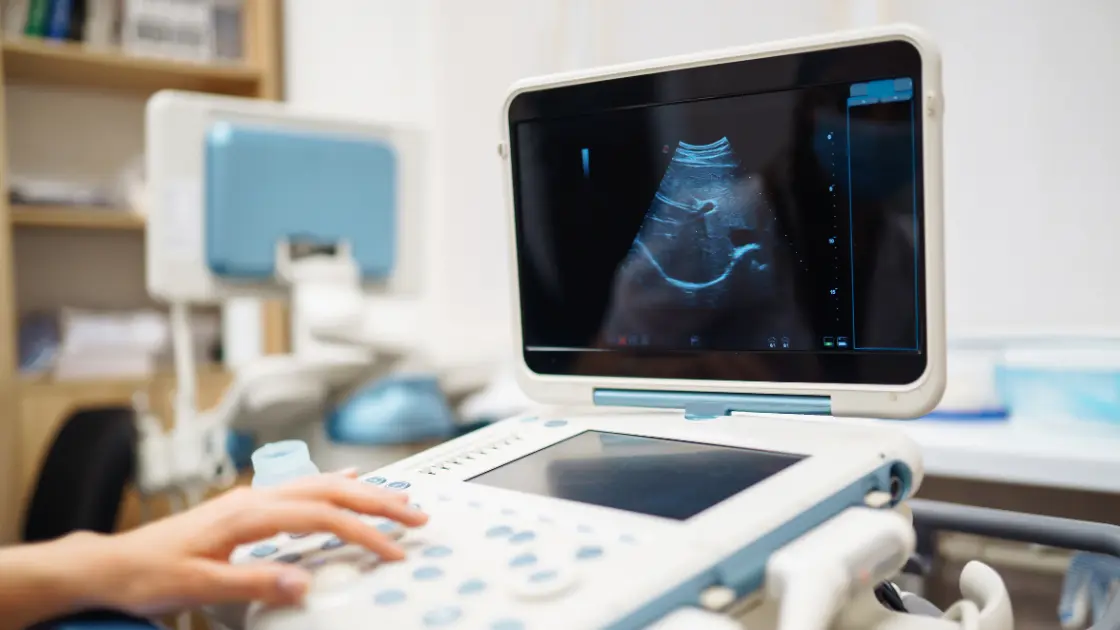
- Ultrasound Imaging: This is the best way that is non-invasive. The gestational sac, yolk sac and even the heartbeat of the fetus can be identified with the help of a transvaginal or an abdominal ultrasound in the uterus.
- hCG Testing: Blood tests are used to measure human chorionic gonadotropin (hCG) levels every 48–72 hours. A healthy rise suggests normal development.
- Physical Exam: Your doctor may check the size of your uterus, note any tenderness, and assess the condition of the cervix to rule out complications.
Together, these methods help ensure the pregnancy is developing inside the uterus and progressing as expected.
Would you like to include a table comparing these tools or a timeline for when each test is usually done?
Is Intrauterine Pregnancy Always Viable?
Not necessarily. While an intrauterine pregnancy means the embryo is in the correct location, it doesn’t always guarantee that the pregnancy will develop normally. In some cases, complications can still occur:
- Blighted Ovum: Failing implantation, a gestational sac develops in the uterus, however no embryo grows towards the inside.
- Missed Miscarriage: The embryo stops growing, but the body doesn’t immediately expel it.
- Molar Pregnancy: Instead of a normal embryo, abnormal tissue grows due to genetic problems.
So, while the pregnancy is in the uterus, medical follow-up is essential to confirm its health and viability.
Treatment Options and Care Plans
If the Intrauterine Pregnancy Is Healthy and Viable
When the pregnancy is confirmed to be healthy and progressing well, your doctor will recommend:
- Routine prenatal care to monitor your and your baby’s health
- Maintaining a healthy lifestyle with good nutrition, rest, and low stress
- Regular ultrasounds and screenings to track fetal development and spot any issues early
If the Pregnancy Is Non-viable
If the pregnancy is inside the uterus but no longer developing properly, you may be offered:
- Medical miscarriage using prescribed pills to naturally pass the tissue
- A D&C (Dilation and Curettage) procedure to safely remove pregnancy tissue
- Access to emotional support or counseling to help you cope with loss and plan for future pregnancies
Intrauterine Pregnancies and Fertility Outlook
Most women go on to have healthy pregnancies even after complications. Doctors may monitor more closely in future pregnancies.
Having intrauterine pregnancies generally means your uterus supports embryo implantation—which is a good sign for future fertility.
How to Support a Healthy Intrauterine Pregnancy
1. Early Prenatal Visit
Once you believe you are pregnant, make a visit with your health care doctor. First ultrasounds are also done for the verify that the pregnancy is intrautrine or in the right placement. This is also great for checking up your hCG levels and spotting any issues before they get a problem.

2. Nutrition and Supplements
Start at once receptive folic acid and prenatal vitamins. These aid in the brain and spine maturation of the child. A good, balanced diet of fresh foods provides the nutrients that helps to sustain a growing intrauterine pregnancy.
3. Avoid Harmful Substances
This is the time not to smoke, avoid liquor, and no drugs during the pregnancy. These can lead to some serious consequences and put your baby’s health at risk. Be sure to consult your doctor before taking any pharmaceutical that is available.
4. Track Symptoms
Keep an eye on how you feel—note any cramping, spotting, or pain. While some symptoms are normal, anything severe or unusual should be reported to your doctor to ensure your intrauterine pregnancy is progressing safely.
When to Seek Medical Help Immediately
Even in a confirmed intrauterine pregnancy, certain symptoms may signal a serious problem. Contact your doctor or go to the emergency room right away if you experience:
- Severe lower abdominal pain that doesn’t go away
- Heavy vaginal bleeding, especially with clots
- Dizziness or fainting, which could mean internal bleeding or low blood pressure
- No heartbeat detected after 7 weeks of pregnancy
These symptoms might be an indication of miscarriage, infection, or other emergency complications.
Emotional Aspects of Intrauterine Pregnancy
A simple knowledge that you are pregnant can elicit intense feelings even at early stages of pregnancy. The help of a partner, family, medical worker is critical. In any uncertain or testing moments, pregnancy or therapy support groups can bail you out.
FAQ About Intrauterine Pregnancy
Q1: What is intrauterine pregnancy in simple terms?
It means a pregnancy where the baby is growing inside the uterus—the right and safe place for it to develop.
Q2: Is intrauterine pregnancy always a good thing?
Yes, it’s where pregnancy should occur. However, viability depends on fetal development and health factors.
Q3: What’s the difference between intrauterine and ectopic pregnancy?
Intrauterine is inside the uterus (normal). Ectopic is outside (abnormal and risky).
Q4: Can I have bleeding during intrauterine pregnancy?
Yes, light spotting is common. Heavy or painful bleeding needs urgent care.
Q5: What causes an intrauterine pregnancy to fail?
Chromosomal issues, infections, hormonal imbalances, and chronic illnesses can lead to early pregnancy loss.
Q6: When is an intrauterine pregnancy confirmed?
Usually around 5–6 weeks of gestation using ultrasound.
Stay tuned with Pregnancy Must to deal with all the confusions in your pregnancy journey. Wish you a wonderful motherhood! Explore more-
10 Weeks Pregnant 3D Ultrasound: What to Expect and Why It Matters
What Is a Chemical Pregnancy? Real Answers, Real Support
